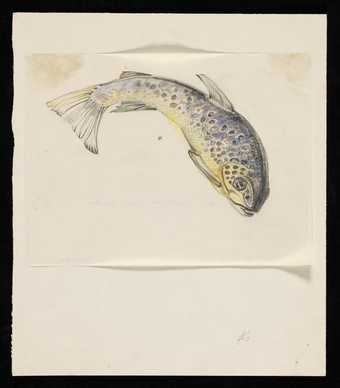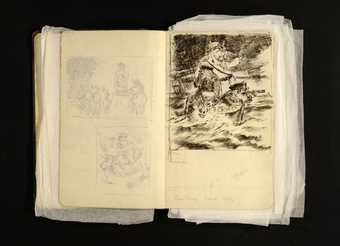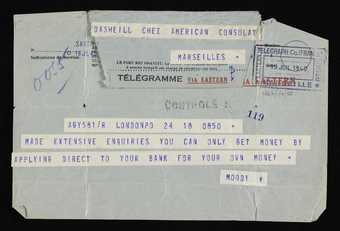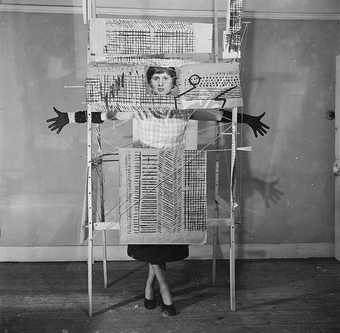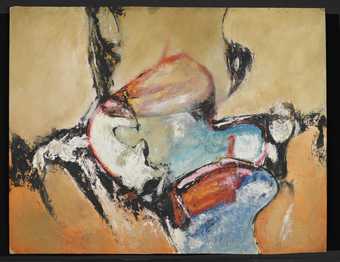AnnoTate
AnnoTate is an online platform that crowdsources the transcription of textual pieces in Tate Archive, developed by the Zooniverse team of citizen scientists, led by the University of Oxford, in collaboration with Tate.
The platform features over 17,000 documents, and invites visitors to transcribe anything from a line to a page at a time. Once five transcribers agree on what a line should read, that line is retired. Once all lines on a page are agreed, the page is retired. The resulting texts are then verified by Tate’s archivists, and will be published online, alongside the original materials, making them available to a global audience and suitable for machine or distant reading.
This approach has provided an additional means for audiences to explore and engage with the collections, while the work of the transcribers in turn makes the archive materials more accessible for others.
The code for AnnoTate has is open source, meaning that it is freely available to be used by others.
Inviting online participation
As a further means of fostering engagement, Archives & Access developed a series of press and participatory campaigns to engage online audiences. These activities were designed to draw attention to the published collections and to provide audiences with ways of experiencing art, heritage and culture through the exploration of archives. These campaigns included:
Call to action: helping Tate identify locations photographed in the archive of John Piper
In August 2015 thousands of pictures taken by British artist John Piper were published on our website. These images, taken from the 1930s to the 1980s, depict Britain’s countryside and architectural heritage – including ruined abbeys, churches, old shop fronts and country inns. While many of the locations were documented by Piper when we acquired the negatives in the 1980s (and research is ongoing) when publication began nearly 1,000 remained unidentified.
We asked members of the public to help identify the locations shown in the images. We did this by creating an article page on the website and issuing a press release. The call to action was also featured on the Radio 4 Today programme, local radio stations, and in national press (including The Guardian and The Independent). In combination, this call resulted in a huge response, with Piper searches overtaking Turner on the website, and over 1400 email contributions from members of the public to Tate archivists.
These contributions showed people engaging in the collections from a variety of perspectives – personal and family histories, social and local histories, geographic interest, historical context, as well as those interested in the collection in terms of art, heritage and culture. The call therefore afforded a range of 'ways in' to exploring this photographic archive. The contributions also had a productive effect on Tate Archive – with over 900 amendments made to the Archive catalogue.
Lessons learned
- Plan carefully, working with press and marketing where possible to place the story and achieve profile
- Consider alternative routes into collections – what other avenues could stoke interest in archives? Storytelling, social histories, local interests proved very effective and resonant in this case
- Prepare to engage
Community Management
When asking members of the public to engage and contribute to your project, it's important that they get a response back and know that their contributions are valued. For the Piper project, our Archive Curator responded to each of the 1400 emails reviewed, and updated those whose information resulted in cataloguing amendments with updates on progress. This was a significant undertaking and should be built into the workplan of the project team member this falls to.
Who was Felicia Browne?
Felicia Browne was an artist, writer, teacher, and anti-fascist. In 1936 she travelled from London to Spain to join the resistance in the Spanish Civil War, and became the first and only female combatant from the UK to lose her life in the conflict.
Her archives, which contains letters, sketches and photographs from this time, including an account of her journey to the Spain and correspondence from her time in the militia, is a valuable historical and artistic resource that reflects a unique perspective on that era. Browne's archives could very easily have been lost to history. Rather than being a footnote, this collection is stored at Tate and further, is now digitally accessible on the website.
To coincide with the 80th anniversary of the outbreak of the conflict, Archives & Access developed ways to get Browne's story back into circulation. This was achieved by:
- Arranging a vitrine display of the Browne archive outside the Reading Rooms in Tate Britain
- Creating an online article and Album featuring Browne's archive material
- Showcasing an Animating the Archives film the detailed Browne's story
- Issuing a press release
This activity was picked up by the national media – which included The Guardian and The Times both running articles inspired by the anniversary campaign, and Browne's story discussed on BBC Radio 4's Woman's Hour.
Therefore, the 'Who was Felicia Browne?' campaign was essentially a push to get Browne's story out there. In doing so, we were able to attract interest in the Browne archive from a diverse range of perspectives – which included artistic, historical, feminist, and political – to both share her story more widely, and make clear how archives can serve as rich resources for all.
Lessons learned
- Develop stories that coincide with significant dates and anniversaries
- Make sure the activity is well resourced. For instance, make sure you have planned in time to respond to questions from journalists, etc., and that time is set aside for responding to any comments and questions from the public
- Strike up conversations with colleagues in media who cover particular areas interest – e.g. the Woman's Hour profiling women's stories - well in advance of delivering your activity
- Think strategically about what cultural impact these drives will have, and aim to increase representation and profile a range of diverse perspectives
